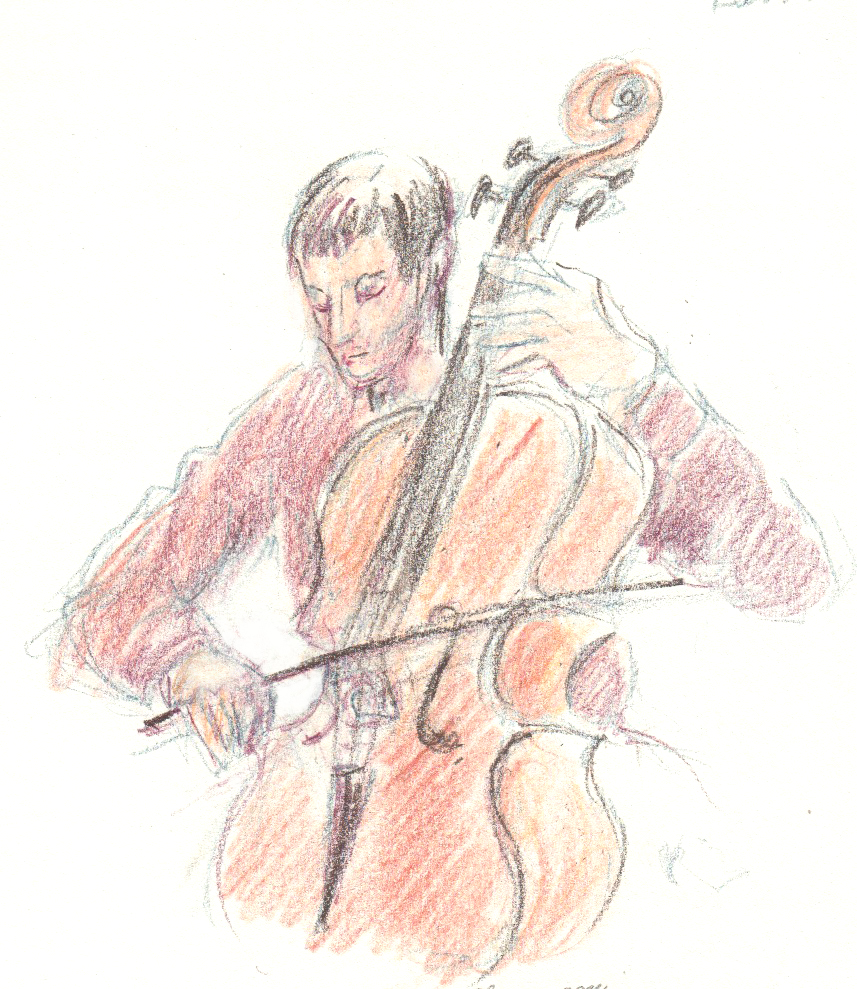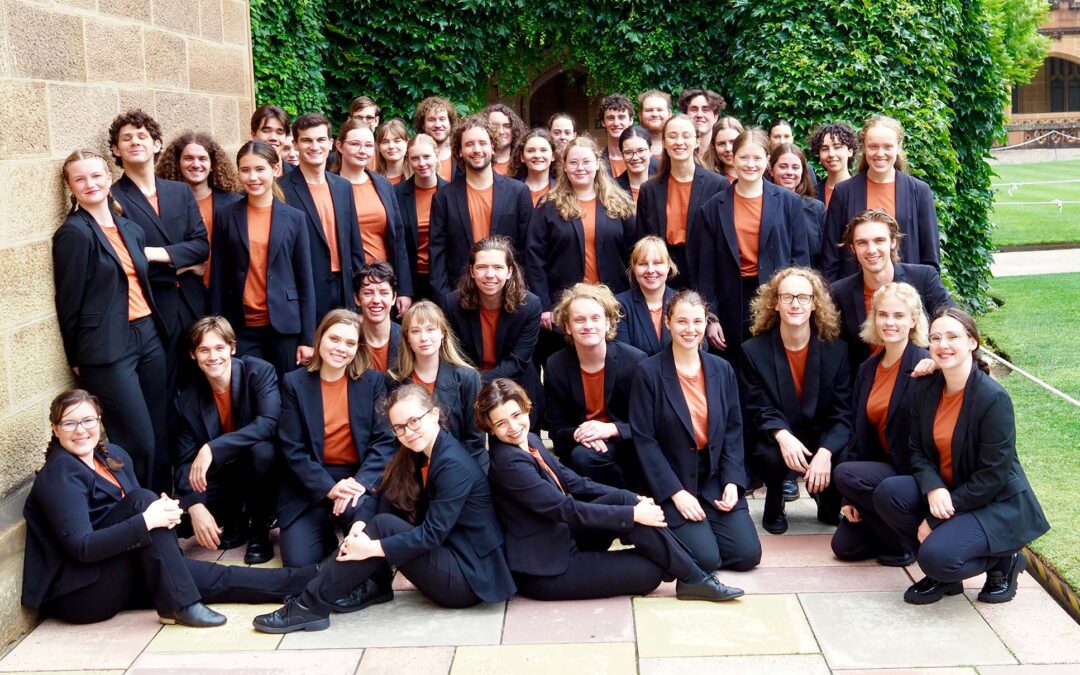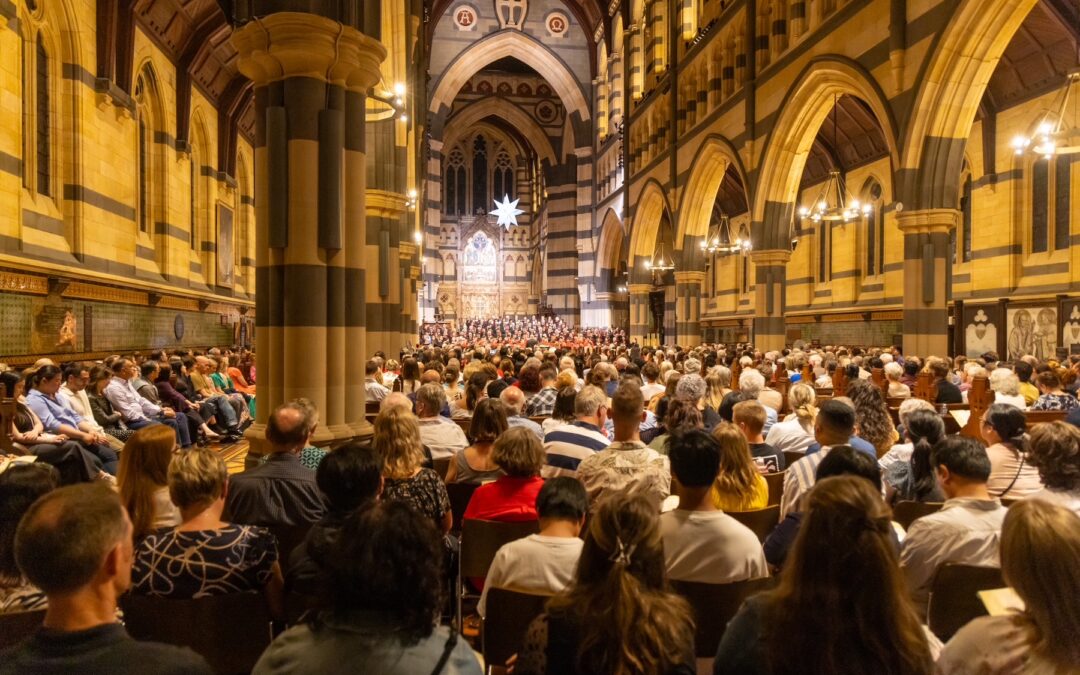Selby & Friends | Back from the Brink
March 22, 2022, City Recital Hall
Luckily for us, Kathryn Selby has lots of extremely talented friends with whom she performs at the City Recital Hall. On this beautiful Autumn night she was accompanied by American cellist, Clancy Newman and violinist Dene Olding, who is well known for his years as Concertmaster of the Sydney Symphony Orchestra (and now holds the Emeritus position), a founding member of the Australia Ensemble @UNSW and first violin of the Goldner String Quartet. Indeed, Dene almost feels like an old friend to me, having heard him play while I sketched him on so many occasions.
On this occasion, Selby & Friends performed three piano trios by three somewhat maverick composers. Kathryn Selby introduced us to Amy Beach, an American composer from the late 19th to early 20th centuries. At the age of 18 she married a wealthy older man on the condition that she no longer performed in public or taught piano for renumeration. This left her with time and opportunity to compose. (When Dvorak went to America in 1892, he was quoted as claiming that “women have no creative power”, causing Amy Beach to cite the many compositions by women from the last 210 years.) After the death of her husband in 1910, she went to Europe and in 1912 won accolades on her piano performances there. After her death in 1944, she was mostly forgotten till the 1970’s, when interest in her work revived.
Her piano trio Op. 150 (she obviously wrote quite prolifically) is an enchanting work in three short movements. Kathryn played rippling notes on the piano, giving an air of mystery and anticipation. She was joined by Clancy Newman on the cello, adding more mysterious undertones. The magic was completed with the delicate violin playing of Dene Olding. This mysterious feeling continued into the second movement, which broke into a playful interlude. A feeling of tension was created with rumbling piano in the last movement as the other instruments joined in. Contrasting quiet passages were interspersed with these and a satisfying climax was reached at the end.

Clancy Newman then introduced us to Dvorak and his “rags to riches” story in a single year, thanks to being awarded a state grant by the Austrian government and thus gaining the attention of Brahms, who championed him and introduced him to the musical publisher, Simrock. His piano Trio No.1 in B-flat major Op.21 is a youthful work, although he had already written two, which he discarded.
Kathryn Selby’s piano positively shimmered in the opening, reminding me of Amy Beach’s opening to the previous piano trio we had just heard, although Dvorak wrote this 63 years earlier. Dene Olding’s violin joined in with the mysterious, dreamy sound, but soon broke out into a joyful positive sound so typical of Dvorak.
The second movement continued the contrast between between darkness and light , opening with a wistful reverie, which passed from instrument to instrument, then brightened into a beautiful duet between Clancy Newman’s cello and Dene Olding’s violin. The wistfulness returned with a feeling of urgency.
The third movement continued with contrasts between lyricism and the energy. The stomping rhythm of the Bohemian polka reflects Dvorak’s love of Bohemian dance forms and was performed with enthusiasm and energy by Selby & Friends.
After a mysterious introduction, the Finale was played with gusto, but momentarily returned to the haunting reverie of the second movement. This was then brightened by the piano and they all played passionately to the end.
After the interval, it was Dene Olding’s turn to introduce Ravel’s Piano Trio in A minor. He stated that the most difficult thing is to say something different, so that his colleagues don’t fall asleep. He told us how Ravel’s Piano Trio in A minor was written in a hurry in 1914, so that he could join in the war effort. (He ended up being an ambulance driver.)
Ravel described the first movement as “Basque in colour”, with its simple melodies and irregular dance rhythms. After Kathryn began a the subtle melody, Dene and Clancy repeated it in a lilting rhythm octaves apart. Passion increased and subsided with the trio’s exquisite playing.
 The second movement owes its style to a type of Malay poetry known as Pantoum, with the main theme alternating between the strings and piano in rhythmic groups. To me it had a playful feeling of “hide-and-seek”, which was cheekily played by the trio.
The second movement owes its style to a type of Malay poetry known as Pantoum, with the main theme alternating between the strings and piano in rhythmic groups. To me it had a playful feeling of “hide-and-seek”, which was cheekily played by the trio.
The third movement begins with a bass line played lovingly by Newman. The other instruments join in this stately Baroque dance. They all join in a passionate climax and finish with a soulful duet between violin and cello, so beautifully played by Dene and Clancy.
The final movement opened atmospherically with another shimmering combination of piano and strings and developed into an exultant climax as the main theme is passed from instrument too instrument. In this movement Ravel’s writing becomes almost orchestral in its complexity, the uneven rhythm revealing his penchant for Basque dances. Ravel exploits all the resources of the players, which Kathryn, Dene and Clancy took on with enthusiasm. They played with virtuosity and passion, resulting in a feeling of euphoria and exultation, which was all felt by the audience, when they clapped and cheered at the end.
It was indeed a triumphant return “from the brink”





